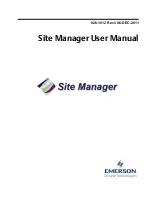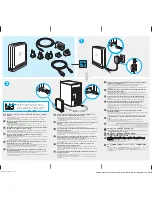
Chapter 2
– Installing MSP 3.3.1 -- 13
If you selected the scenario where you are going to install all MSP Components
except the MSP Database on the installation machine and if you wish to stay with the
Windows Authentication option, you will need to be logged in to the server with a
domain user that has been configured to have sysadmin permissions on the SQL
Server.
18. Click
Next
to go to an
MSP Core Database Review
dialog box. If you indicated a SQL
instance on which an Existing MSP Database is installed, the installer defaults to keeping
the MSP data. If you accept the information, click Next. If you need to change it, click
Back
.
Note:
If you selected the MSP Control Component features but those features are not
supported on the selected SQL Server instance, you will be informed that MSP
Control Component features will not be installed and you will be allowed to continue.
If you do not want to keep any data that was in the previous MSP database, you can
check the box to delete the existing data. When the MSP server installs it will wipe
out all existing MSP data and install a clean database.
19. On the
SQL Server Analysis Services
dialog box, it will show the SQL Server instance
where the MSP Core Database is being installed along with the Analysis Database name.
Notes:
If you selected Long Term Analysis as a desired MSP Control Component feature,
if Analysis Services are not available on the SQL Server instance selected, you will
not be able to continue.
Since windows authentication is the only option for connecting to Analysis Services,
you will need to be logged in as a user that is a Server Administrator in Analysis
Services.
20. On the
MSP Runtime Windows Authentication
dialog box, default values are provided
for a one box install. Click
Next
to continue.
If a one box install was selected, then this default local user will be created if it
doesn’t exist.
If you selected the scenario where you are going to install all MSP Components
except the MSP Database on the installation machine, then this user should be a
domain user.
If you selected Long-Term Analysis then this user will have to be a domain user.
Note:
This dialog will test the user credentials provided. If the credentials are for a local
user and the user does not exist it will be created. If the local user exists, then the
credentials must match. If non-default credentials are provided and the local user
does not exist, it will confirm that a local account should be created with the provided
credentials.
21. On the
MSP Authentication to SQL Database
dialog box, choose the method of
authentication and click
Next
.










































